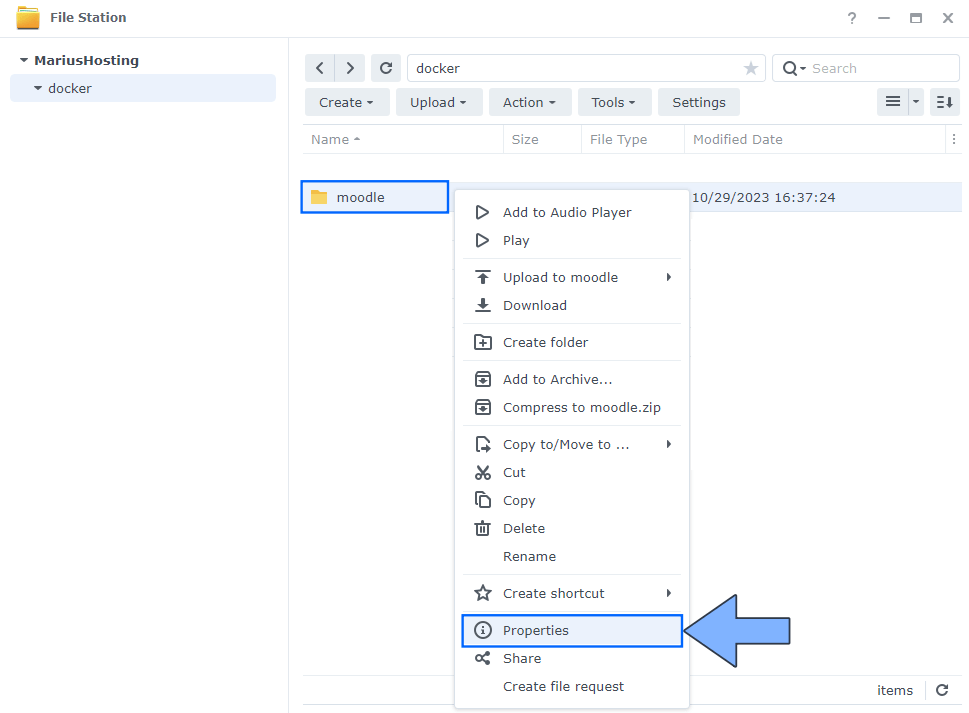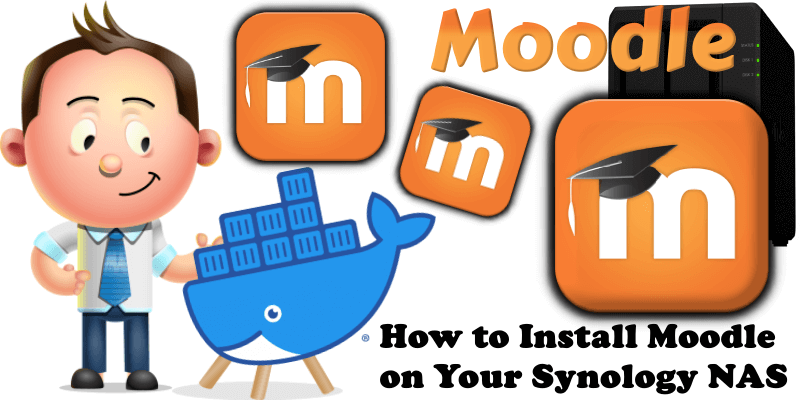
Moodle LMS is a very popular open source learning management solution for the delivery of eLearning courses and programs. It’s used not only by universities, but also by hundreds of corporations around the world who provide eLearning education for their employees. In this step by step guide I will show you how to install Moodle on your Synology NAS using Docker and Portainer.
This guide works perfectly with the latest Moodle v4.5.5 LTS release.
STEP 1
Please Support My work by Making a Donation.
STEP 2
Install Portainer using my step by step guide. If you already have Portainer installed on your Synology NAS, skip this STEP. Attention: Make sure you have installed the latest Portainer version.
STEP 3
Make sure you have a synology.me Wildcard Certificate. Follow my guide to get a Wildcard Certificate. If you already have a synology.me Wildcard certificate, skip this STEP.
STEP 4
Go to Control Panel / Login Portal / Advanced Tab / click Reverse Proxy. Follow the instructions in the image below.
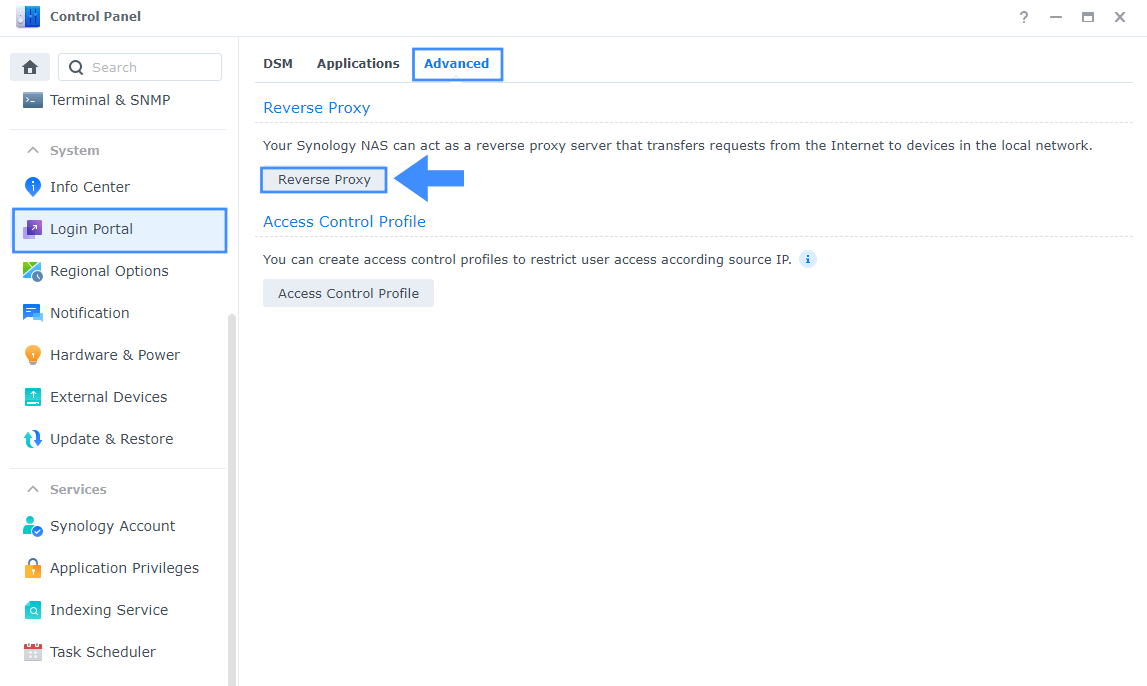
STEP 5
Now click the “Create” button. Follow the instructions in the image below.
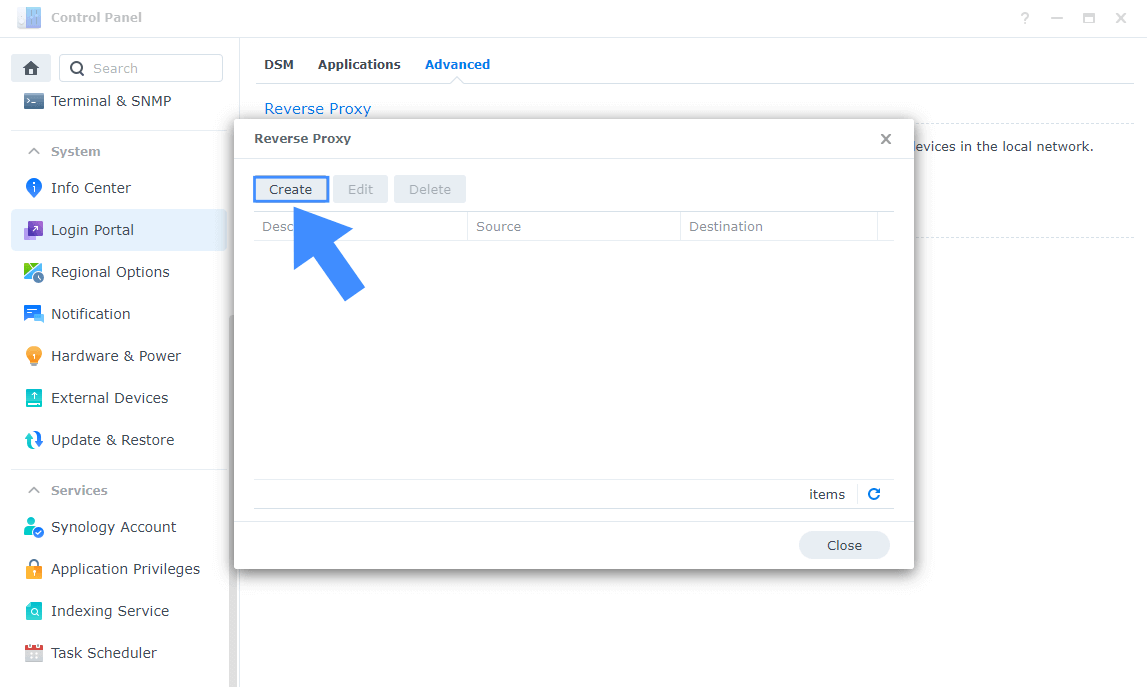
STEP 6
After you click the Create button, the window below will open. Follow the instructions in the image below.
On the General area, set the Reverse Proxy Name description: type in Moodle. After that, add the following instructions:
Source:
Protocol: HTTPS
Hostname: moodle.yourname.synology.me
Port: 443
Check Enable HSTS
Destination:
Protocol: HTTP
Hostname: localhost
Port: 9490
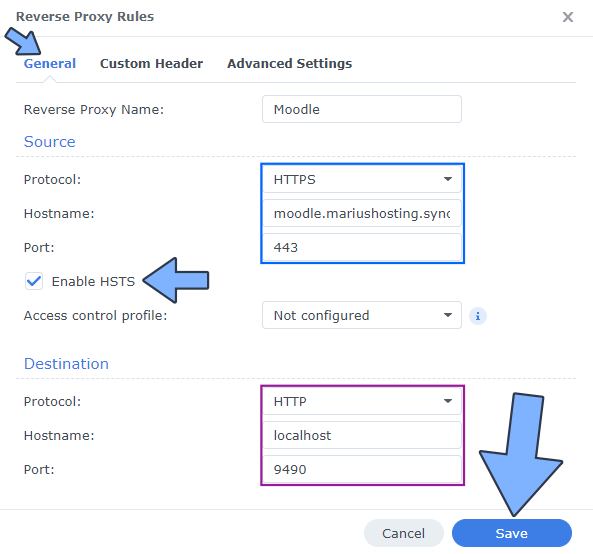
STEP 7
On the Reverse Proxy Rules click the Custom Header tab. Click Create and then, from the drop-down menu, click WebSocket. After you click on WebSocket, two Header Names and two Values will be automatically added. Click Save. Follow the instructions in the image below.

STEP 8
Go to Control Panel / Network / Connectivity tab/ Check Enable HTTP/2 then click Apply. Follow the instructions in the image below.
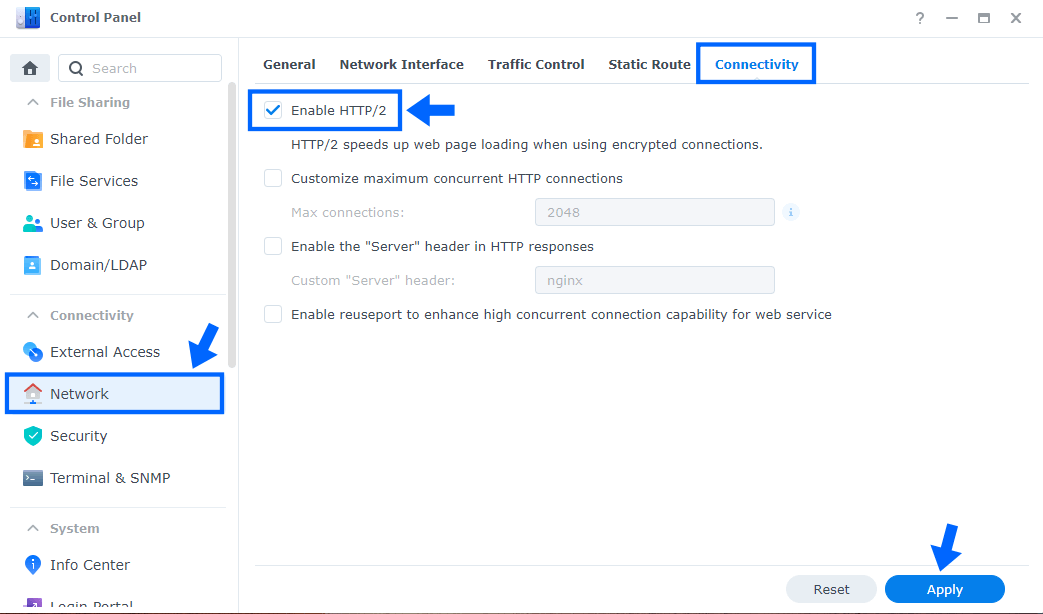
STEP 9
Go to Control Panel / Security / Advanced tab/ Check Enable HTTP Compression then click Apply. Follow the instructions in the image below.
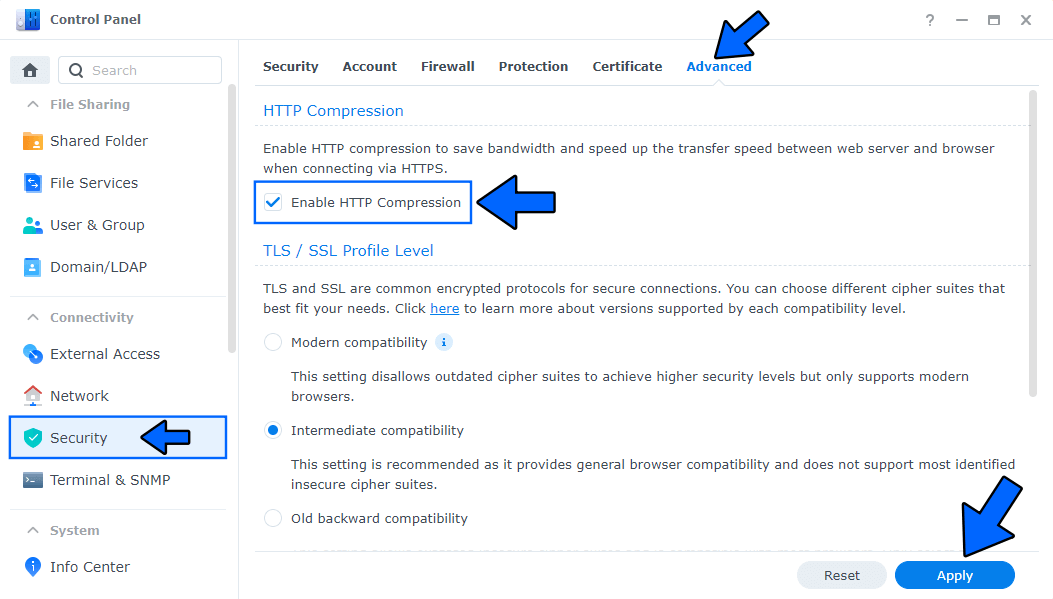
STEP 10
Go to File Station and open the docker folder. Inside the docker folder, create one new folder and name it moodle. Follow the instructions in the image below.
Note: Be careful to enter only lowercase, not uppercase letters.

STEP 11
Now create three new folders inside the moodle folder that you created at STEP 10 and name them data1, data2, db. Follow the instructions in the image below.
Note: Be careful to enter only lowercase, not uppercase letters.
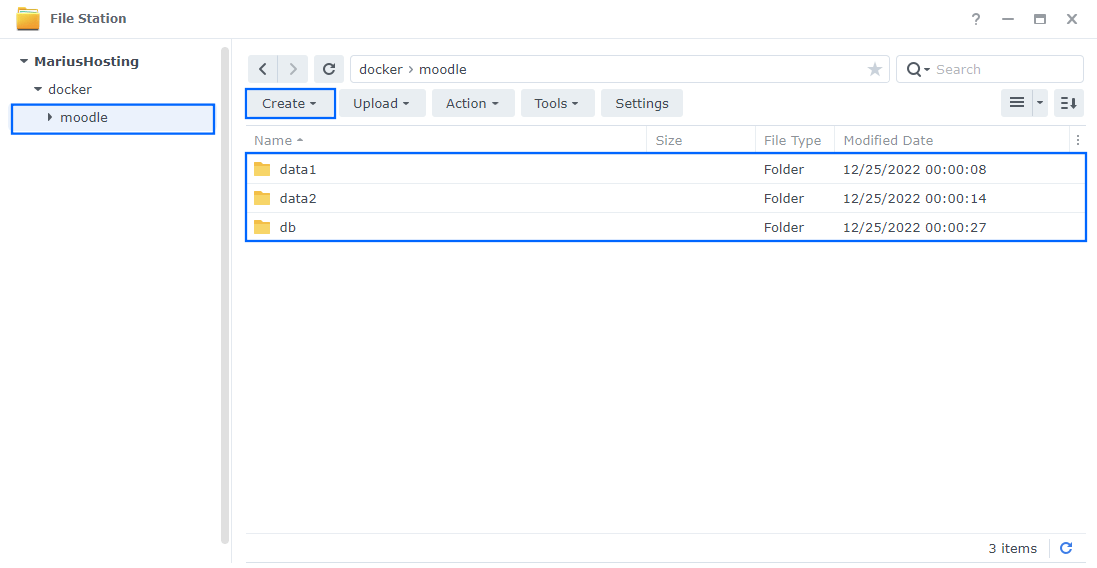
STEP 12
Right click on the moodle folder that you have previously created at STEP 10 then click Properties. Follow the instructions in the image below.
STEP 13
Go to the Permission tab then click Advanced options. From the drop-down menu choose “Make inherited permissions explicit“. Follow the instructions in the image below.

STEP 14
Select Everyone then click the Edit tab. Follow the instructions in the image below.
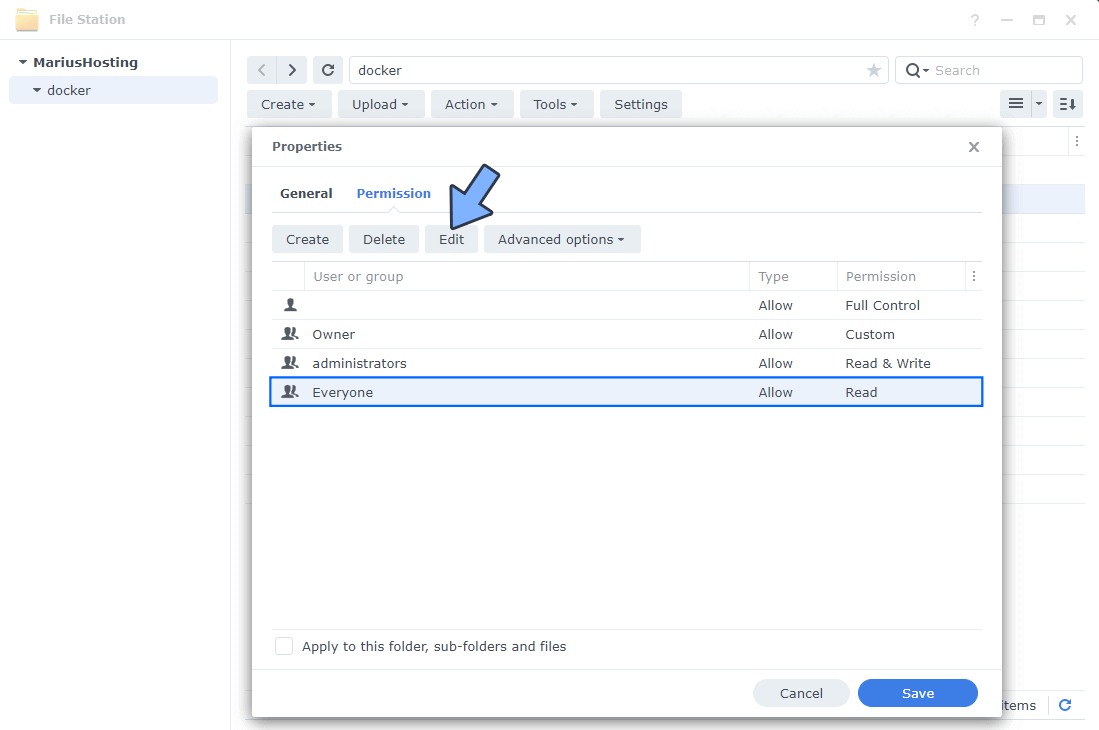
STEP 15
Check all Read and Write Permissions. Click Done. Follow the instructions in the image below.
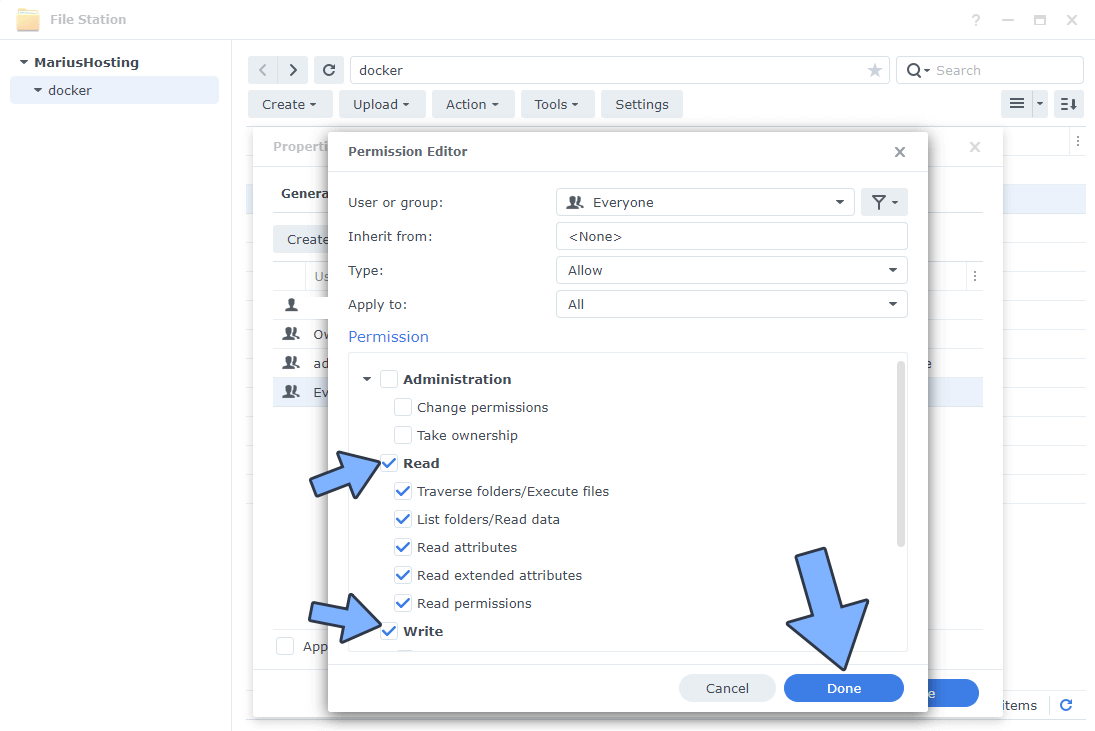
STEP 16
After you click Done on STEP 15, check “Apply to this folder, sub-folders and files“. Click Save. Follow the instructions in the image below.
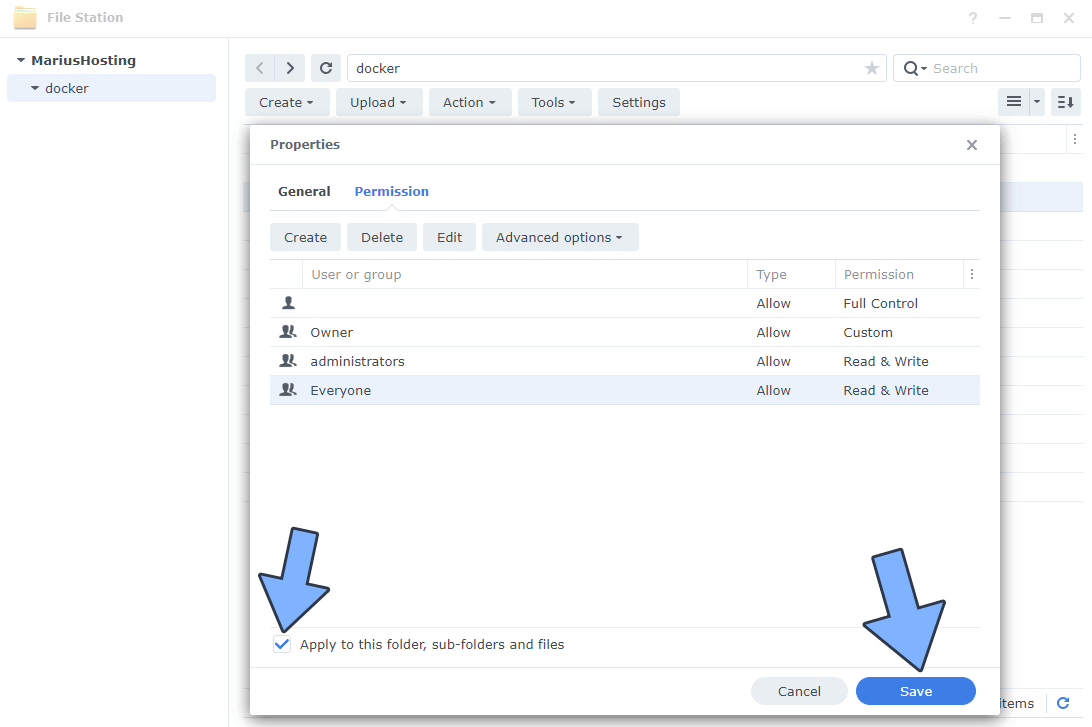
STEP 17
Log into Portainer using your username and password. On the left sidebar in Portainer, click on Stacks then + Add stack. Follow the instructions in the image below.

STEP 18
In the Name field type in moodle. Follow the instructions in the image below.
services:
db:
image: docker.io/bitnami/mariadb:11.4 #LTS Long Time Support Until May 29, 2029.
container_name: Moodle-DB
hostname: moodle-db
security_opt:
- no-new-privileges:false
environment:
- MARIADB_USER=bn_moodle
- MARIADB_DATABASE=bitnami_moodle
- MARIADB_PASSWORD=moodlepass
- MARIADB_ROOT_PASSWORD=rootpass
- MARIADB_CHARACTER_SET=utf8mb4
- MARIADB_COLLATE=utf8mb4_unicode_ci
volumes:
- /volume1/docker/moodle/db:/bitnami/mariadb:rw
restart: on-failure:5
moodle:
image: bitnami/moodle:4.5 #LTS Long Time Support Until October 6, 2027.
container_name: Moodle
hostname: moodle
security_opt:
- no-new-privileges:true
ports:
- 9490:8080
environment:
- MOODLE_DATABASE_HOST=moodle-db
- MOODLE_DATABASE_PORT_NUMBER=3306
- MOODLE_DATABASE_USER=bn_moodle
- MOODLE_DATABASE_PASSWORD=moodlepass
- MOODLE_DATABASE_NAME=bitnami_moodle
- PHP_POST_MAX_SIZE=512M
- PHP_MEMORY_LIMIT=512M
- PHP_UPLOAD_MAX_FILESIZE=512M
- MOODLE_USERNAME=marius
- MOODLE_PASSWORD=mariushosting
- MOODLE_SITE_NAME=Learn With Marius
volumes:
- /volume1/docker/moodle/data1:/bitnami/moodle:rw
- /volume1/docker/moodle/data2:/bitnami/moodledata:rw
restart: on-failure:5
depends_on:
db:
condition: service_started
Note: Before you paste the code above in the Web editor area below, change the value for TZ. (Select your current Time Zone from this list.)
Note: Before you paste the code above in the Web editor area, change the value for MOODLE_USERNAME and add your own username. marius is an example for a username. You have to insert your own username.
Note: Before you paste the code above in the Web editor area, change the value for MOODLE_PASSWORD and add your own password. mariushosting is an example for a password. You have to insert your own password.
Note: Before you paste the code above in the Web editor area, change the value for MOODLE_SITE_NAME and add your site name. Learn With Marius is an example for a site name. You have to insert your own site name.
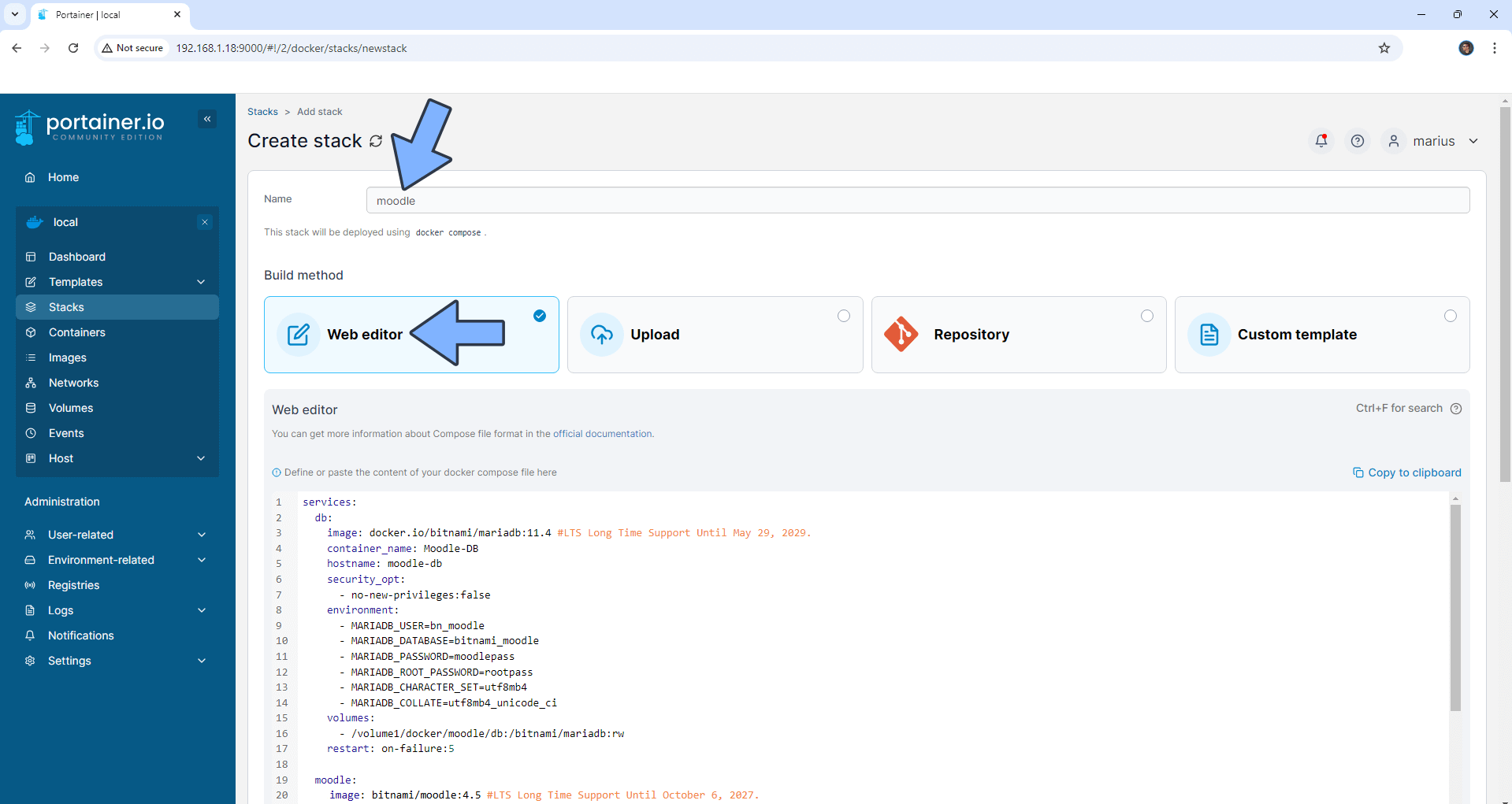
STEP 19
Scroll down on the page until you see a button named Deploy the stack. Click on it. Follow the instructions in the image below. The installation process can take up to a few minutes. It will depend on your Internet speed connection.
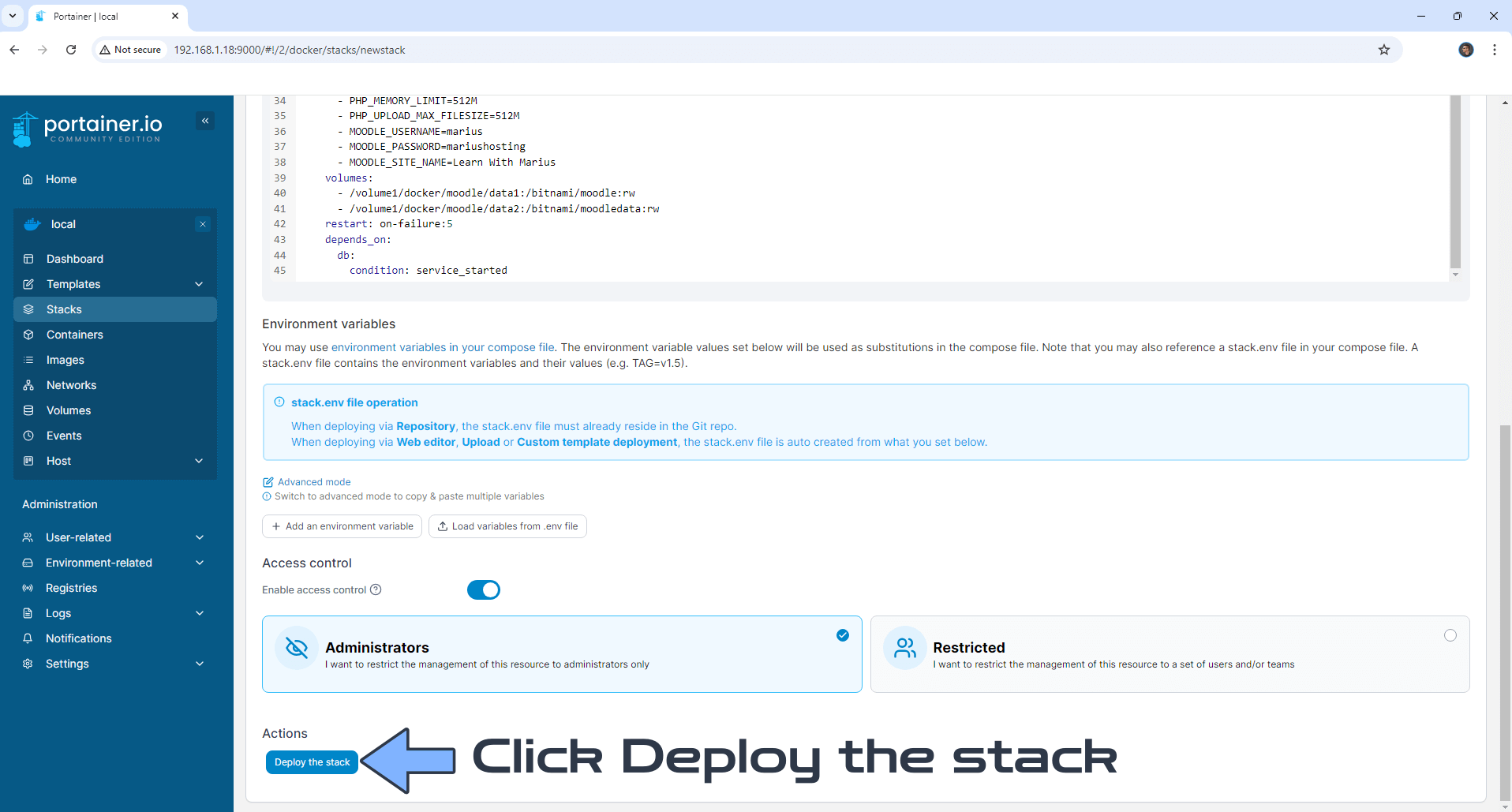
STEP 20
If everything goes right, you will see the following message at the top right of your screen: “Success Stack successfully deployed“.
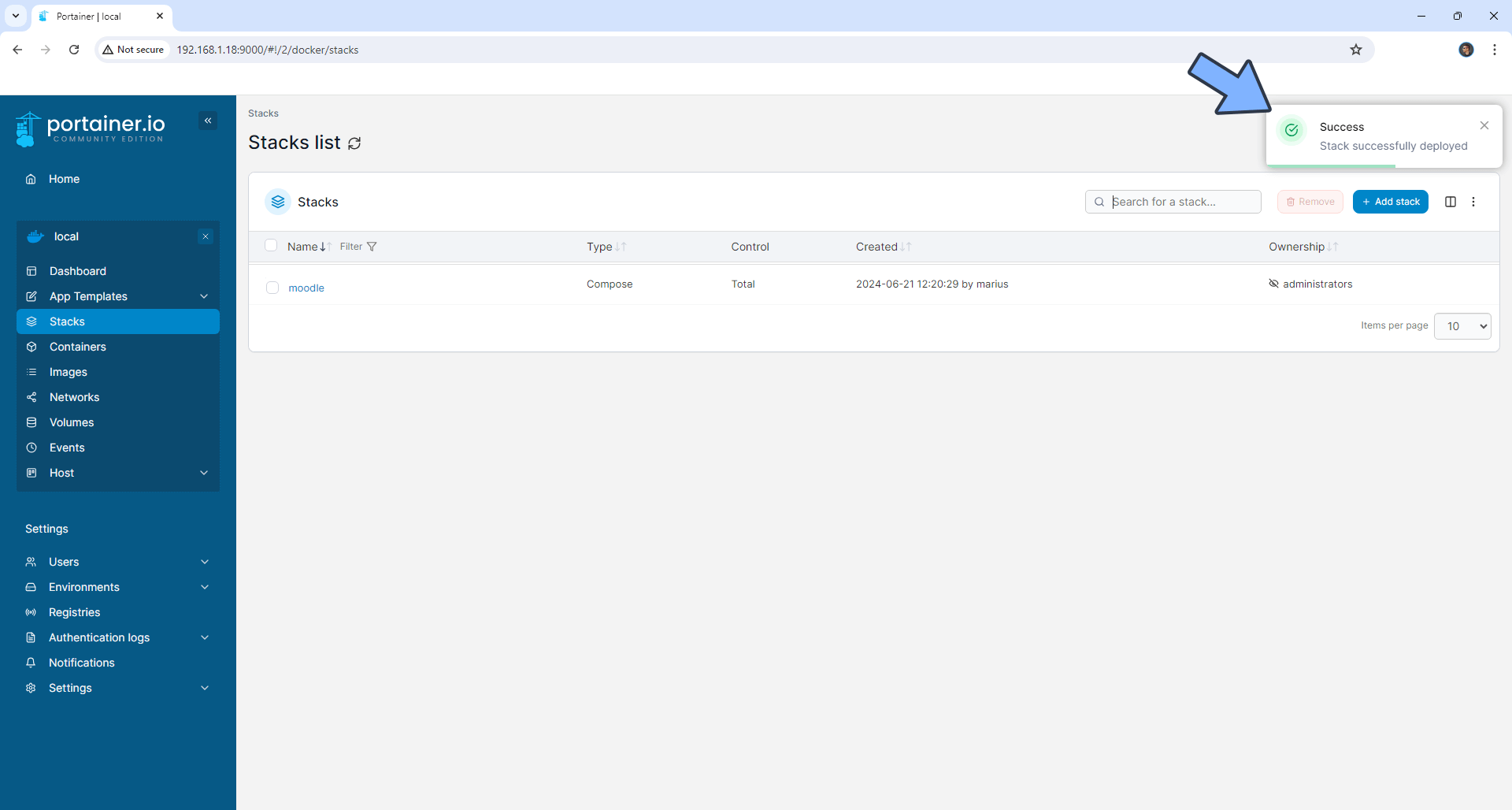
STEP 21
🟢Please Support My work by Making a Donation. Almost 99,9% of the people that install something using my guides forget to support my work, or just ignore STEP 1. I’ve been very honest about this aspect of my work since the beginning: I don’t run any ADS, I don’t require subscriptions, paid or otherwise, I don’t collect IPs, emails, and I don’t have any referral links from Amazon or other merchants. I also don’t have any POP-UPs or COOKIES. I have repeatedly been told over the years how much I have contributed to the community. It’s something I love doing and have been honest about my passion since the beginning. But I also Need The Community to Support me Back to be able to continue doing this work.
STEP 22
Please wait approximately 10 minutes for the installation to be completed or you will get a Synology blank page if you try to connect too soon. Now open your browser and type in your HTTPS/SSL certificate like this https://moodle.yourname.synology.me In my case it’s https://moodle.mariushosting.synology.me If everything goes right, you will see the Moodle main page. Click Log in at the top right of the page. Follow the instructions in the image below.
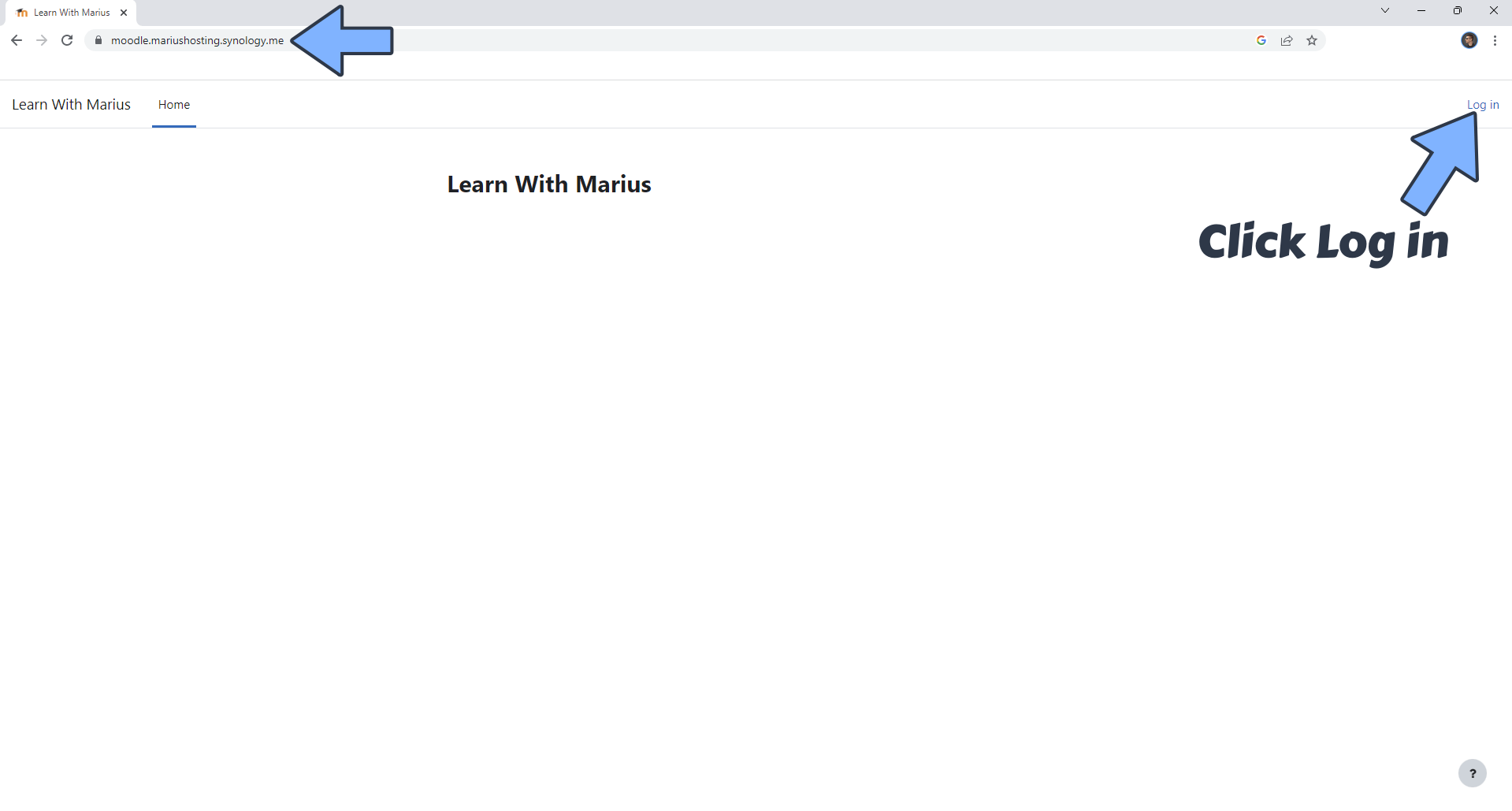
STEP 23
Type in your own Username and Password that you have previously created at STEP 18. Click Log in. Follow the instructions in the image below.
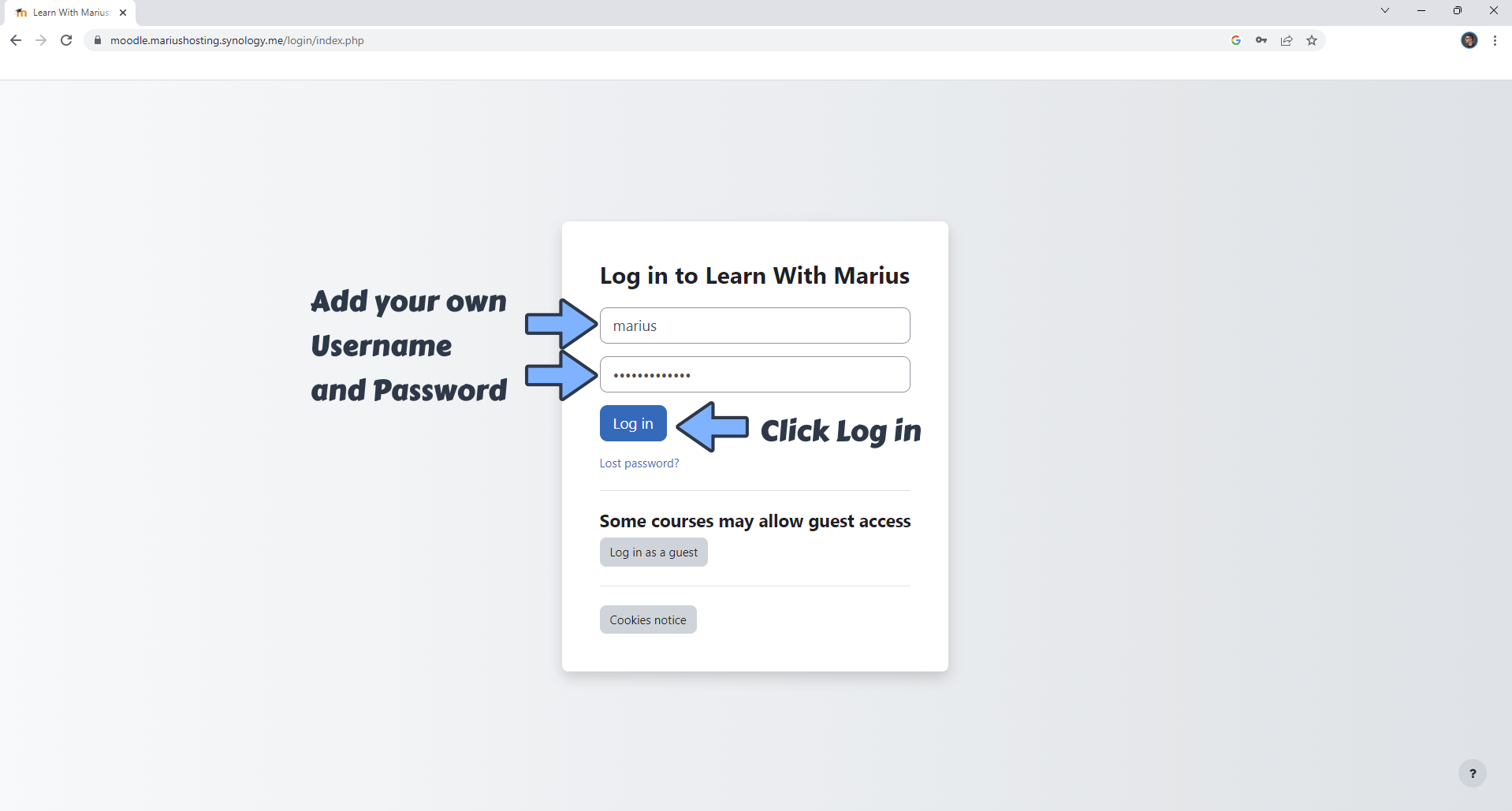
STEP 24
Your Moodle Dashboard will look like this.
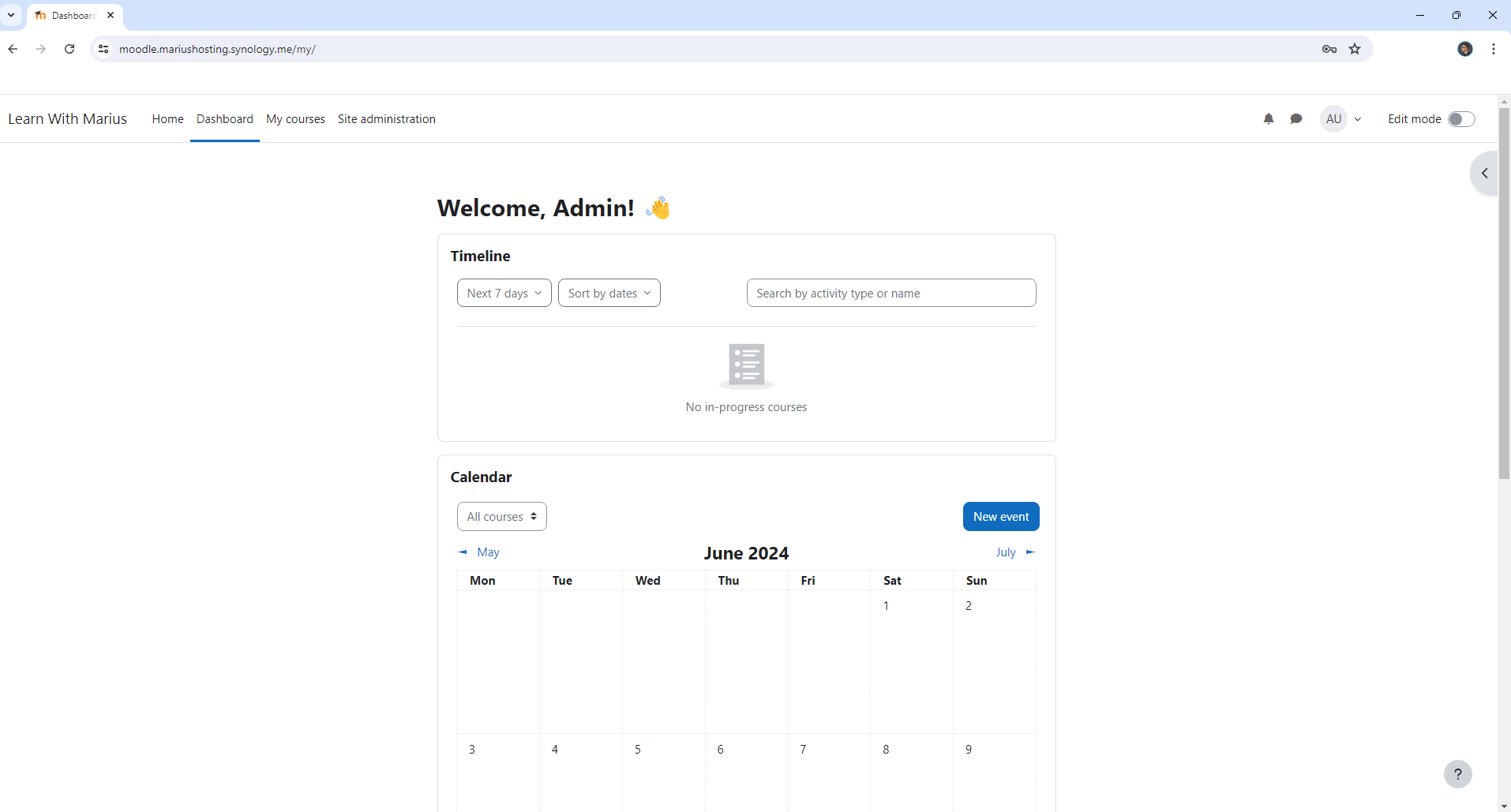
STEP 25
At the top right of the page click Profile to add your own details to the profile. Follow the instructions in the image below.
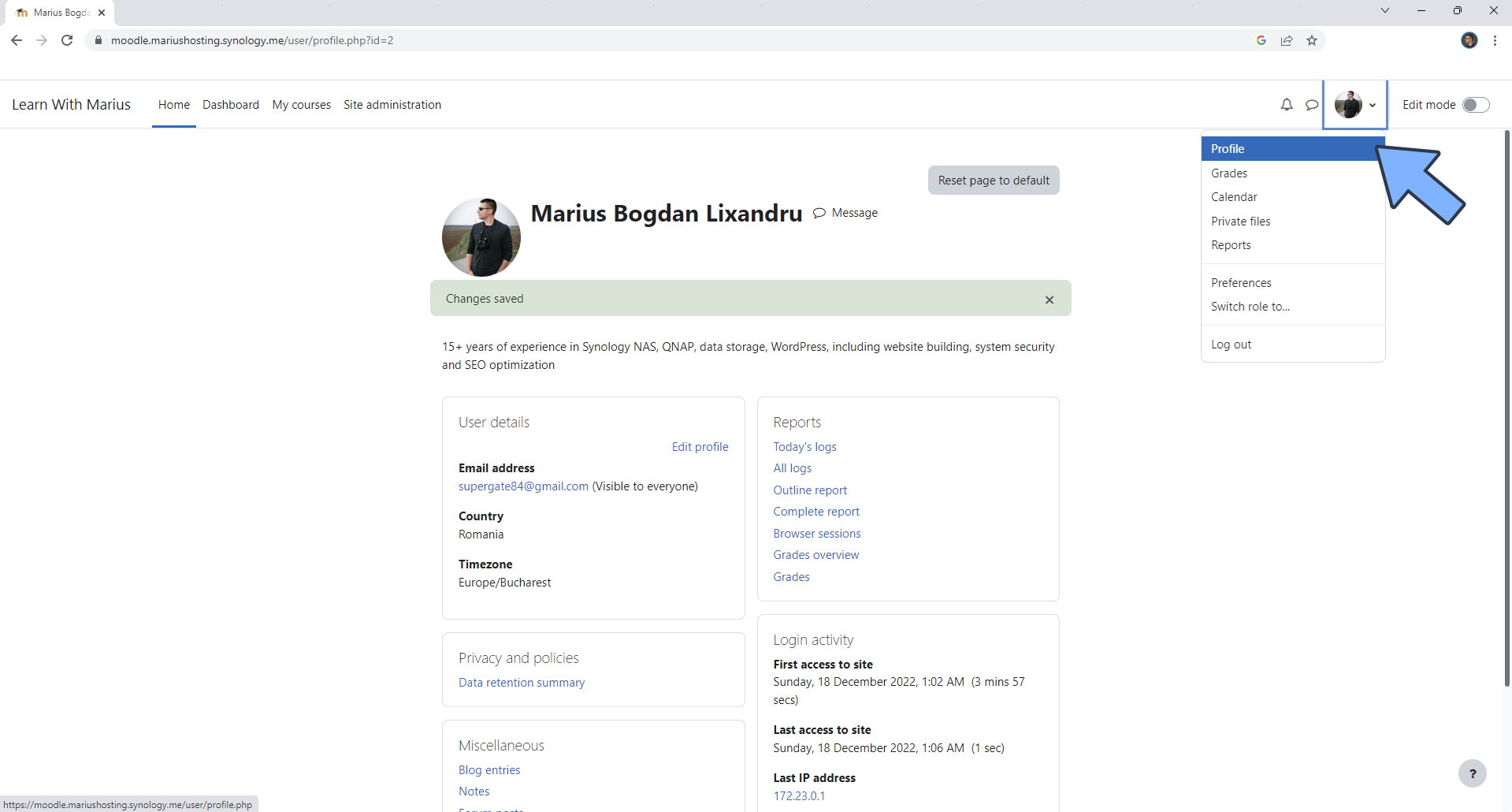
STEP 26
Follow my Step by step guide on how to Set Up Email Notifications on Moodle.
Enjoy Moodle!
Note: Find out how to update the Moodle container with the latest image.
Note: How to Back Up Docker Containers on your Synology NAS.
Note: Can I run Docker on my Synology NAS? See the supported models.
Note: How to Free Disk Space on Your NAS if You Run Docker.
Note: How to Schedule Start & Stop For Docker Containers.
Note: How to Activate Email Notifications.
Note: How to Add Access Control Profile on Your NAS.
Note: How to Change Docker Containers Restart Policy.
Note: How to Use Docker Containers With VPN.
Note: Convert Docker Run Into Docker Compose.
Note: How to Clean Docker.
Note: How to Clean Docker Automatically.
Note: Best Practices When Using Docker and DDNS.
Note: Some Docker Containers Need WebSocket.
Note: Find out the Best NAS Models For Docker.
Note: Activate Gmail SMTP For Docker Containers.

